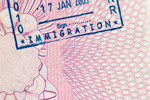Getting About In Australia
 Getting About In Australia
Getting About In Australia
Within cities and towns
Most major cities within Australia, including the big five of Sydney, Melbourne, Perth, Adelaide and Brisbane, have a complex public transport system of buses and trains. Recent infrastructure developments, such as the massive bus skyways and transit lanes throughout Brisbane, have made the public transportation network of cities even more convenient. Melbourne also boasts a system of trams running through the city.
The railway systems in the larger cities are generally above-ground railroads, with several suburban lines leading into the central business districts of each metropolis. Taxis are also highly utilised in Australia, but they can be quite expensive when travelling over long distances. Driving is another popular method of transportation in Australian cities.
Emigrants will have to apply for an Australian drivers license before they can drive in the country. The process isn't too demanding, especially if emigrants have been driving for some time in their own homeland.
Intrastate
Some states, such as Queensland and Western Australia, are simply too big to travel by car. That is, of course, if travellers are short on time. The intrastate air services within Australia's territories and states are widely used. There are airports located in most regional towns. Companies like Qantas Link and Regional Express make it possible for travellers to fly to the more remote towns around the states. For many smaller, country towns, the air services are the primary links to the larger, coastal cities.
The various states of Australia also offer extensive bus routes from major cities to the remote towns. These routes usually follow the major roads and highways that attempt to connect the many regions around each state. Of course, there are some parts of each state that are generally inaccessible to mainstream transportation.
Interstate
Flying between the major cities of Australia is undoubtedly the most expedient way to get from A to B. Sydney, Melbourne, Perth, Brisbane, Darwin, and Adelaide provide daily flights throughout Australia. To a lesser extent, Gold Coast, Townsville, Newcastle, Hobart, Launceston, Alice Springs, Cairns and Mackay also operate busy airports, with routes to several important domestic cities daily.
Virgin Blue, Qantas, Jetstar and Tiger Airways are the largest domestic carriers operating in Australia. Historically, Qantas has dominated the air routes of Australia. That was until Virgin Blue began operating in the 1990's.
Flying isn't the only method of transport between states. There are several highways linking the east to the west, and the north to the south, such as the Hume Highway and the Great Eastern Highway. Nevertheless, driving across state can sometimes take more than a day of straight driving. It is recommended to only drive interstate if several stops are planned. Enjoy the beautiful scenery along the way, and don't rush the trip, as some of the highways have notorious accident spots.


